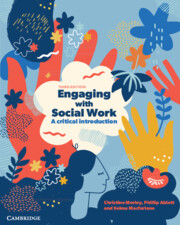Refine search
Actions for selected content:
37953 results in Cambridge Textbooks
4 - Hemodynamic Imaging Methods
- from Part II - Hemodynamic Neuroimaging
-
- Book:
- Introduction to Human Neuroimaging
- Published online:
- 23 December 2025
- Print publication:
- 16 October 2025, pp 79-100
-
- Chapter
- Export citation
References
-
- Book:
- Introduction to Human Neuroimaging
- Published online:
- 23 December 2025
- Print publication:
- 16 October 2025, pp 358-382
-
- Chapter
- Export citation
Frontmatter
-
- Book:
- Introduction to Human Neuroimaging
- Published online:
- 23 December 2025
- Print publication:
- 16 October 2025, pp i-iv
-
- Chapter
- Export citation
Glossary
-
- Book:
- Introduction to Human Neuroimaging
- Published online:
- 23 December 2025
- Print publication:
- 16 October 2025, pp 343-357
-
- Chapter
- Export citation
Preface
-
- Book:
- Introduction to Human Neuroimaging
- Published online:
- 23 December 2025
- Print publication:
- 16 October 2025, pp xiii-xvi
-
- Chapter
- Export citation
Part III - Electrophysiological Neuroimaging
-
- Book:
- Introduction to Human Neuroimaging
- Published online:
- 23 December 2025
- Print publication:
- 16 October 2025, pp 185-186
-
- Chapter
- Export citation
7 - Basic Statistical Analyses
- from Part II - Hemodynamic Neuroimaging
-
- Book:
- Introduction to Human Neuroimaging
- Published online:
- 23 December 2025
- Print publication:
- 16 October 2025, pp 139-158
-
- Chapter
- Export citation
10 - Electroencephalography and Magnetoencephalography
- from Part III - Electrophysiological Neuroimaging
-
- Book:
- Introduction to Human Neuroimaging
- Published online:
- 23 December 2025
- Print publication:
- 16 October 2025, pp 203-225
-
- Chapter
- Export citation
13 - Multi-modal Imaging
- from Part IV - Complementary Methods
-
- Book:
- Introduction to Human Neuroimaging
- Published online:
- 23 December 2025
- Print publication:
- 16 October 2025, pp 283-297
-
- Chapter
- Export citation
Part I - Structural Neuroimaging
-
- Book:
- Introduction to Human Neuroimaging
- Published online:
- 23 December 2025
- Print publication:
- 16 October 2025, pp 27-28
-
- Chapter
- Export citation
5 - Designing a Hemodynamic Imaging Experiment
- from Part II - Hemodynamic Neuroimaging
-
- Book:
- Introduction to Human Neuroimaging
- Published online:
- 23 December 2025
- Print publication:
- 16 October 2025, pp 101-123
-
- Chapter
- Export citation
16 - Conclusion
- from Part IV - Complementary Methods
-
- Book:
- Introduction to Human Neuroimaging
- Published online:
- 23 December 2025
- Print publication:
- 16 October 2025, pp 330-342
-
- Chapter
- Export citation
3 - Structural Imaging Methods
- from Part I - Structural Neuroimaging
-
- Book:
- Introduction to Human Neuroimaging
- Published online:
- 23 December 2025
- Print publication:
- 16 October 2025, pp 45-76
-
- Chapter
- Export citation

Understanding International Security
- Theory and Practice
-
- Published online:
- 11 October 2025
- Print publication:
- 30 October 2025
-
- Textbook
- Export citation

Satellite Remote Sensing for Water Management
-
- Published online:
- 10 October 2025
- Print publication:
- 04 September 2025
-
- Textbook
- Export citation

Engaging with Social Work
- A Critical Introduction
-
- Published online:
- 09 October 2025
- Print publication:
- 23 October 2025
-
- Textbook
- Export citation
10 - The Evolution of Language
-
- Book:
- Evolutionary Psychology
- Published online:
- 30 October 2025
- Print publication:
- 09 October 2025, pp 261-296
-
- Chapter
- Export citation
8 - The Evolutionary Psychology of Social Behaviour: Reciprocity and Conflict
-
- Book:
- Evolutionary Psychology
- Published online:
- 30 October 2025
- Print publication:
- 09 October 2025, pp 195-225
-
- Chapter
- Export citation
Index
-
- Book:
- Evolutionary Psychology
- Published online:
- 30 October 2025
- Print publication:
- 09 October 2025, pp 486-492
-
- Chapter
- Export citation
5 - Cognitive Development, Modularity and Innateness
-
- Book:
- Evolutionary Psychology
- Published online:
- 30 October 2025
- Print publication:
- 09 October 2025, pp 117-140
-
- Chapter
- Export citation
